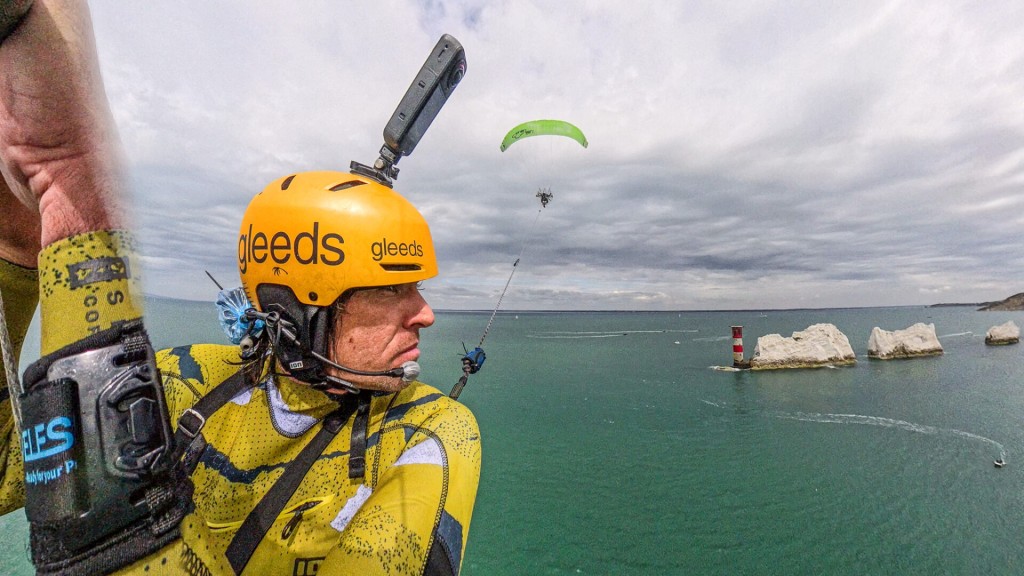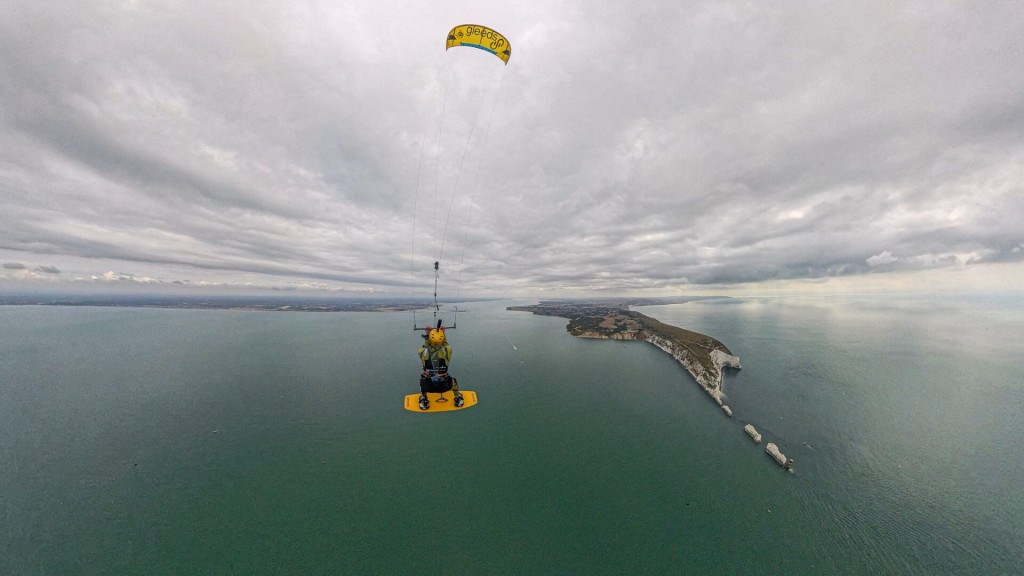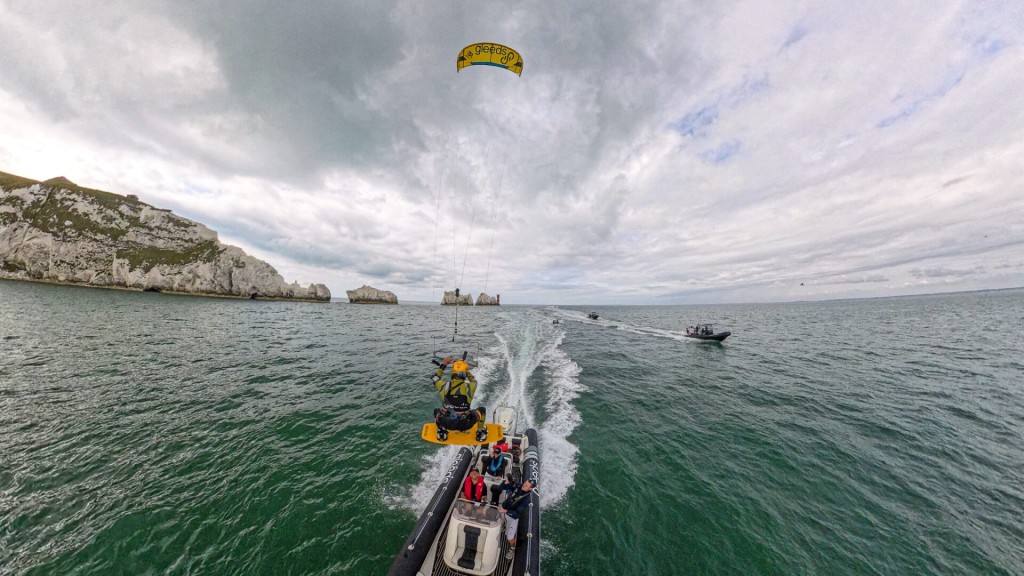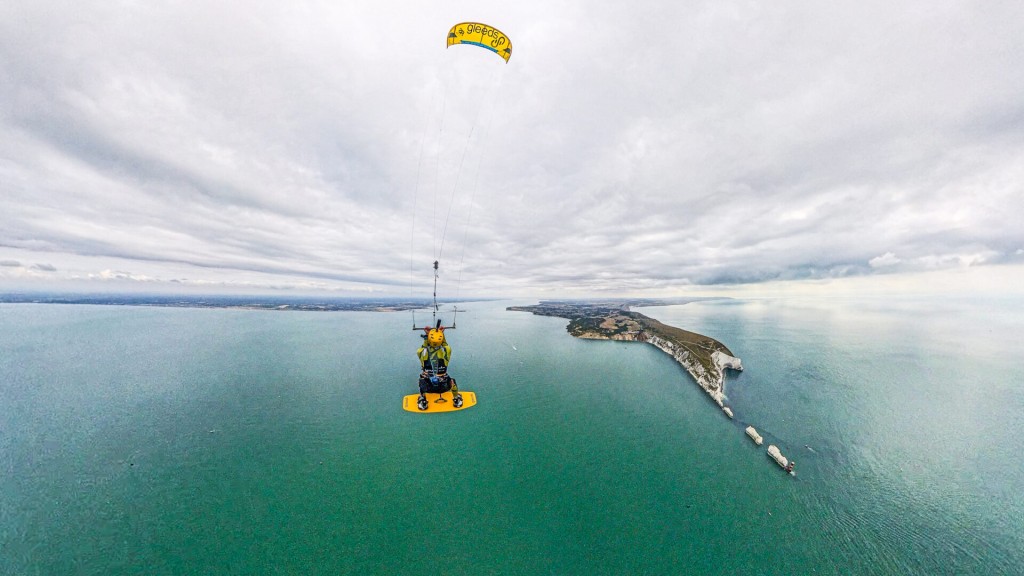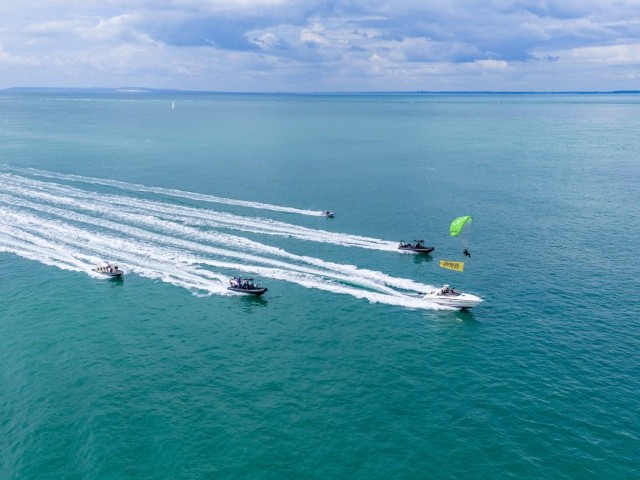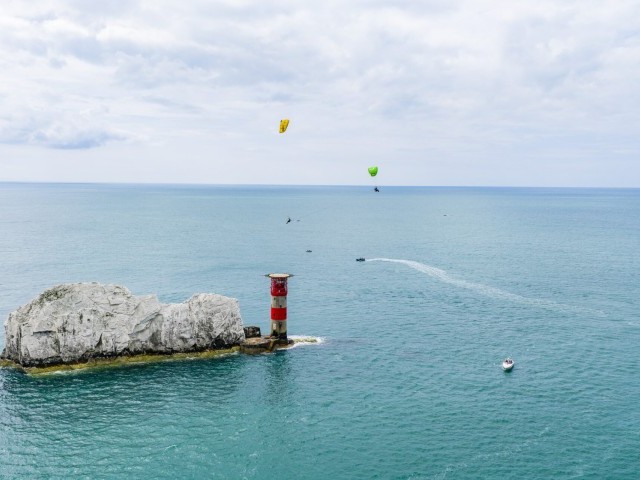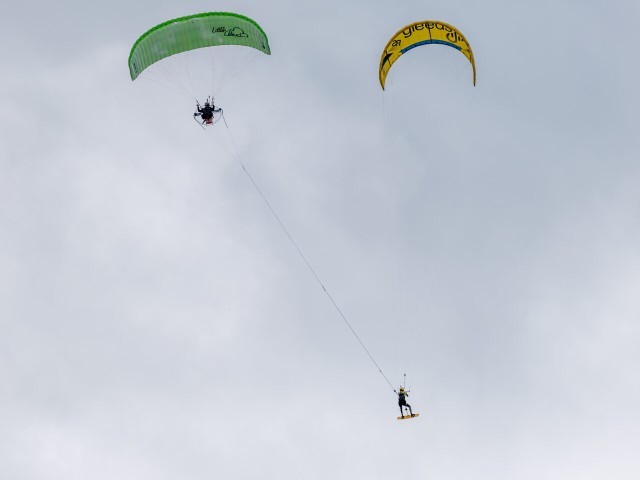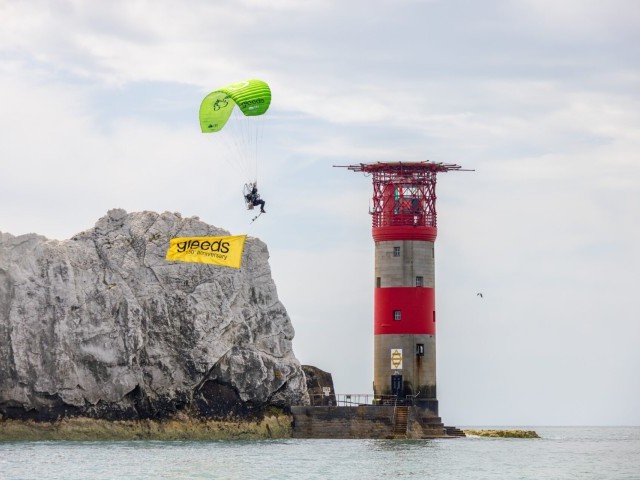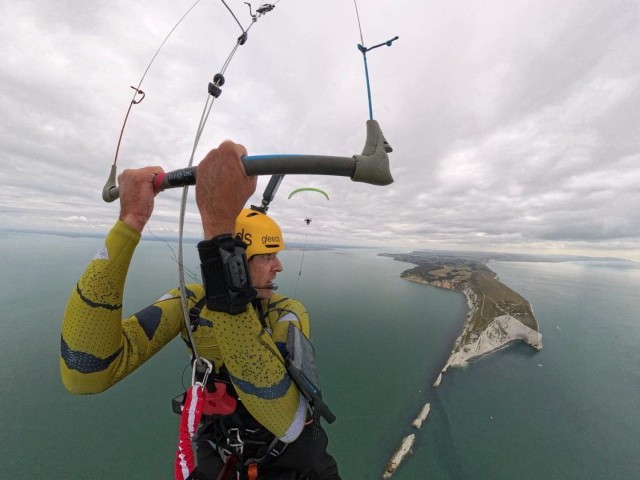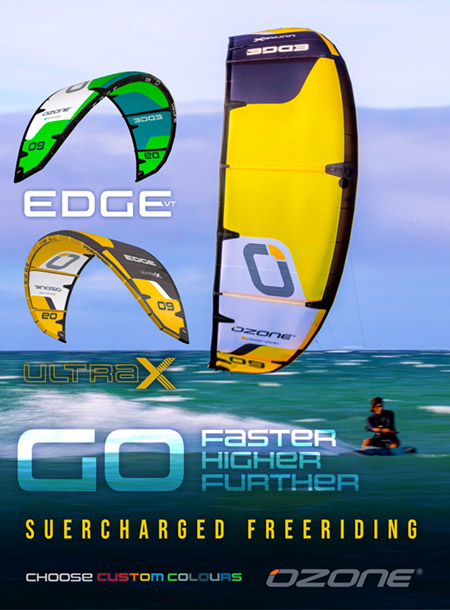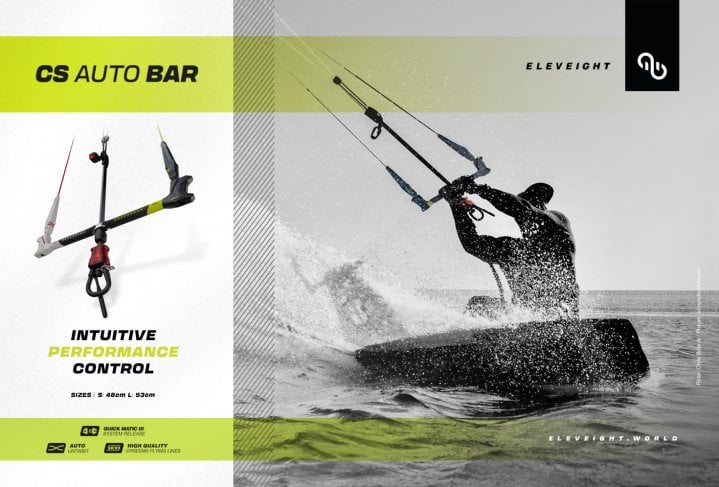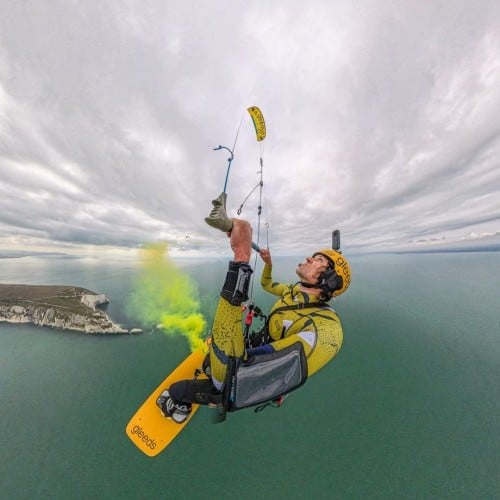
Jake Scrace’s Guinness World Record Stunt | (1,587 feet Tow-up Above the Iconic Needles, Isle of Wight)
Features / Tue 23rd Sep, 2025 @ 3:35 pm
Jake Scrace’s latest stunt saw him towed into the sky by a paramotor before detaching to glide back down to the sea, a world first that earned him a place in the Guinness Book of Records. We caught up with Jake to hear how the idea began, what it took to make it happen, and what it felt like to hang more than one thousand feet above the water with nothing but trust, teamwork, and his kite.
It’s great to meet you, Jake! First of all, we have to ask: what were you thinking when you heard the idea of being towed into the air by a paramotor and then detaching to glide back down to the sea?! Who came up with the idea, and who approached you?
Likewise! The idea originated several years ago after I saw Chey Anich fly out to the Rampion wind farm, located off the coast of West Sussex. It’s more than 10 miles offshore, so we took the boats out as safety cover. It was my first look at paramotoring up close, and his skills really impressed me. It was mental. Building on this, we began experimenting with attaching a wakeboard tow line and handle to the paramotor to see if Chey could retrieve us from the water. We discovered he could easily take our weight, even picking us up from the boat and transferring us to another, like something out of Mission Impossible. I then had a lightbulb moment that this concept could be adapted to work with a kite, too – and here we are.
How long did it take to plan and prepare for this stunt from start to finish?
This stunt has been in the works for over a year and a half now, so it’s been quite a journey. We had to learn a lot, as no one had done this before, so there was a lot of trial and error. For me, learning to fly the kite in new ways was key to being able to pinpoint my landing from heights over 1000ft. I learned to do 360-degree spirals with the wind, much like a paraglider does to descend.
What were some of the biggest logistical hurdles in bringing this vision to life?
One of the biggest challenges was building a tow system that was both safe to use with a paramotor and also worked as a gimbal, allowing multiple directions of pull under tow, so Chey didn’t get pulled off course. We also had to design the tow system to have a release mechanism at either end so we could both detach in an emergency. We practised a lot in a range of conditions and found we had an upper limit of around 20mph – any more than this and it became quite dangerous for the paramotor as he had no forward penetration against the wind. We had a set window in the diary for the stunt, so we needed to be able to perform in a range of conditions. The weather was definitely a big concern; any rain would have stopped us in our tracks. Conditions can get quite rough at The Needles, too, so we were keeping our fingers crossed for a calm, dry day, and luckily the wind gods were kind to us and we were able to pull it off on the first attempt.
Had you previously done other tow-ups of this scale, and why did you choose The Needles?
Over the years, I have done other tow-ups behind boats and jet skis, even one dressed as a chicken. But nothing of this scale, the concept of using a paramotor meant we could really scale up, as we were no longer restricted to the length of the tow line. As for the Needles, we wanted an iconic backdrop and somewhere that provided a sense of perspective on the height we were at, rather than just open water.
A stunt like this requires a big team. What roles did people have to play to make sure this stunt was a success?
For sure. To pull something like this off, we needed to find a team as crazy as the idea itself. I had a vision on how it would work and having the right team was vital. Everyone on the team is very experienced, with backgrounds in power boat racing, kitesurfing and wing sports. For something like this you need to trust the people around you to work together and adapt to the situation if things don’t go to plan. On the day our core team of 5 grew to over 40 with film crew, safety boats and Guinness involved too – it was great to see everyone work together so well and get the job done.”
You’ve already done some incredible jumps, like the one at Worthing Pier. How did this challenge compare?
Thank you. For something like the Pier, the conditions need to be mental; you want as much wind as possible. This stunt was a very different bag; ideally, we wanted conditions at the other end of the spectrum with as little wind as possible. This stunt had a considerable element of teamwork too, which was new; we all had to learn to work together. There’s a lot of moving parts involved with the paramotor, kite and launch boat, and everyone had to be in the right place at the right time to get it right.
Holding a Guinness World Record is a big deal. What did it mean to you personally?
For me, having Guinness involved was the cherry on top. From the beginning, this stunt was about doing something that’s never been seen before and bringing two sports together in an entirely new concept.
When you first started kitesurfing at the age of 8, did you ever imagine you’d be doing a stunt like this?!
No not at all. I’ve always liked to push the limits and have been fortunate to be part of the evolution of kiting since its beginnings in the UK. I think that when you reach a state of flow with any sport, it’s only natural to look for new ways to explore it. For me, it’s what keeps me coming back after so many years in the sport.”
How did you prepare physically and mentally to handle the altitude and pressure?
Mentally, you have to feel comfortable at that height, as I found out quite early on in our practice sessions. It’s bloody scary being up even 200ft with a kite. Learning to paramotor helped me overcome this fear significantly. Altitude wasn’t too much of an issue, as air pressure only increases by around two psi per 1000m. The arm pump was quite intense on the tow up, though – it took around 25 minutes to reach 1,500 ft.
Take us to the moment you lifted off! What was going through your mind as you left the water?
Sh*t just got real! The pressure was on; we had quite a big audience on the day. It really wasn’t the moment for gear fear to set in but I found it hard to get out of my head. On the day, we had quite a narrow weather window to get it done with the possibility of rain on the forecast so there was a bit of pressure to get up there quickly whilst the conditions were in our favour.”
Was there a point where you felt fear, or did the adrenaline take over completely? Was it scary when you had to cut loose from Chey Anich finally? There must have been a lot of trust right there!
Yeah, there’s always fear there, but you can’t let it take over. It’s a very committed thing to do. I try to remain as calm as possible to minimise any rotation and stay in control. There’s a huge element of trust with Chey, we both have our backs to each other under tow, so we’re essentially blind, which was a weird feeling to start with – you have to allow for a certain degree of error too, things like turbulence are unavoidable, and you have to stay calm and deal with it.”
How did you manage the safety aspects? We didn’t notice a parachute! Was there a plan B in case of equipment failure?
In addition to the release systems on the tow line, we recognised that the tow system was rated to support my weight in case of a failure on my end. I also had a reserve parachute on my lap as a precaution.
Which brands supported you during this stunt?
Aside from some help with a wetsuit and helmet – shout out to Sam at Worthing Watersports – we didn’t have a kite sponsor on board for the stunt. In terms of kit, we were entirely self-funded. The kite we found on the marketplace, the bar I built myself, taking components from various brands and the board I also made myself. We had a sponsor for the big day – Gleeds, a global construction consultancy, and we performed the stunt in celebration of their 150th anniversary in business.
Did you use a specific bar and lines for this stunt?
Yes, during practices I experimented with different line and bar lengths. I found a longer bar gave me much more resistance against rotation and shorter lines gave me more control.
You mentioned already been thinking about the next stunt. Can you tell us a little more about that?
I can’t say too much just yet, but there are definitely some exciting projects in the line-up. I’m excited to push this concept further and see where we can take it!
Thank you, Jake. It’s been a pleasure!
Thanks, Jen!
—
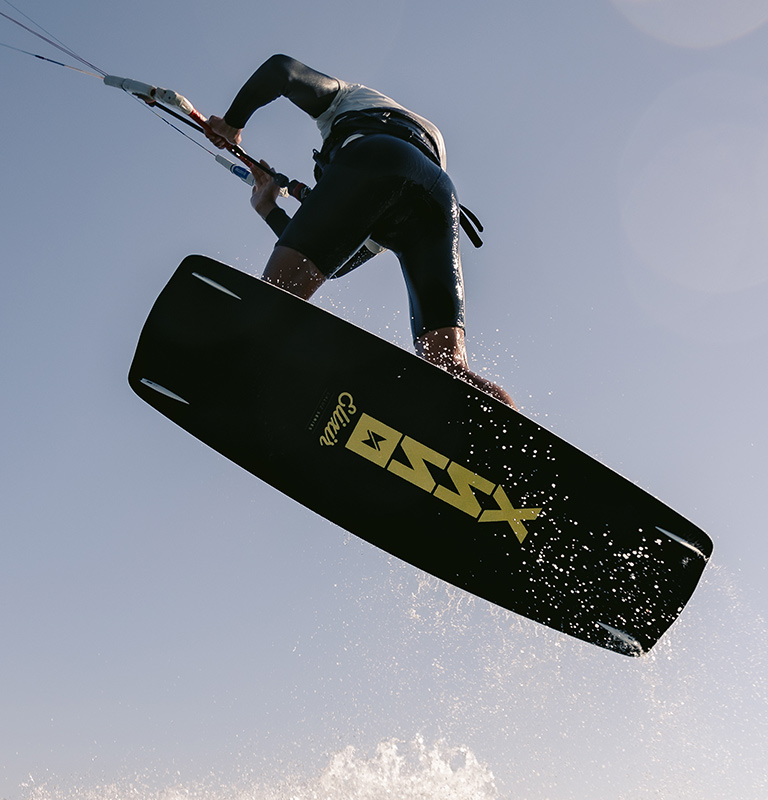
Win a Xenon Elixir Twin Tip & T-Shirt this issue in our FREE subscriber prize draw.
Tue 23rd Sep, 2025 @ 3:35 pm
By Jen Tyler
Italian/Egyptian Jen Tyler grew up on the sandy beaches of the Red Sea and has been on the IKSURFMAG & Tonic Mag team since 2017.


